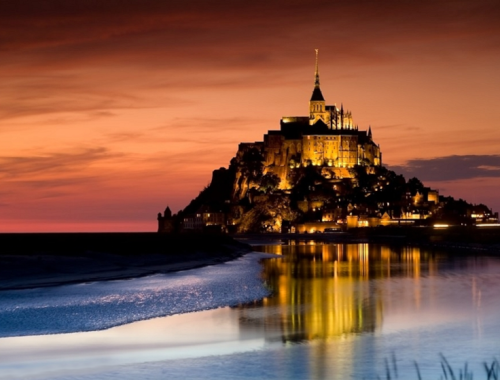Life, Death and The Music
There is nothing more original than life itself.
So what is the best way to celebrate life?
To give something original back to life.
Wayne Shorter
I think time is only one moment. That’s all the time there is.
So yesterday, today and tomorrow a just one moment.
Joe Zawinul
I think time is only one moment. That’s all the time there is.
So yesterday, today and tomorrow a just one moment.
Joe Zawinul
When we are going to die, we get a new birthday.
We got the birthday to life, back then.
Now we get the birthday to eternity.
Joe Zawinul

These statements come from two people, who both in their musicality proved their special competence to be fully in the eternal now. At the same time, it comes from two gentlemen who, at the time of the statements, had sufficient life experience to formulate, what it was all about and what it was they had been doing all along. As many will know, they formed the core of the legendary ensemble, which in the 70s-80s caused both jazz, rock, classical music and a number of ethnic styles to be brought into the same living room in a way that did not seem sticky , artificial or demonstrative but created a very special organic sound that, as Wayne Shorter puts it: was completely original.
The name of the legendary band was of course Weather Report.
What the two men are saying here, is what they were and what they did. They walked the talk.
Why are their statements so credible and profound?
Because we are in no doubt if we are endowed with ears in our heads, for it is a piece of eternity we hear and feel, a piece of life that has always been and never ceases.
Joe Zawinul died on September 11, 2007 at the age of 75.
Wayne Shorter is still alive and is 88 years old.
*
Member of the famous ensemble for five years was the most remarkable bassist the world has ever heard. His name was Jaco Pastorius. He died at a young age after a senseless attack by a doorman at a club. He managed to become a legend alive. He was a dedicated family man and the father of two daughters and a son. One day in a conversation with his brother, he breaks down in tears. When the brother asks what’s wrong, he says: I know I’m going to die when I’m 34 years old. Do you want to take care of my children? The man was a psychic and had seen his own fate.
*
I know many stories about musicians. But I do not know of any example of a musician falling dead on stage in the middle of a piece of music.
I have a theory as to why this does not happen. We disregard here that musicians also become old and frail, and only a few will be on stage in the natural moment of death. However, these are statistics that do not say much qualitatively about either life or death. The theory is based on and takes into account that the practice of music is a life-promoting and life-preserving act in the highest possible way. Death has great respect for life and is therefore willing to postpone the moment of death out of respect for the music.
It is, as I said, a theory based on a conjecture, wíth which you therefore can do with whatever you want.
*
Said about the Devil by Martin Luther: He is a bad musician.
Said about the great violin virtuoso of the 19th century Nicola Paganini: He must be the devil himself – since he performed grips on the violin, which was considered impossible. That was before his famous-infamous etudes and cappricios ended up on the standard repertoire of any young violinist who had ambitions to win the next Tchaikovsky Competition in Moscow and then use it as show-off extras in his upcoming career as a soloist.
In the famous frieze in the large St. Mary’s Church in Lübeck, The Death from Lübeck is seen. It is the Dance of Death (Todestanz), one of the cultural phenomena of the Middle Ages. Death personified as a skeleton dances in front of the chain dance. Like the Ratcatcher from Hammeln, everyone dances in line after Death playing the violin. The dance is a Memento Mori, remember death. But what does it mean to remember death, and what are we to remember? We must remember that no one escapes death and that in death all souls are equal. So after Death with his mezmerizing violin, the king, the bishop, the lord, the merchant, the soldier, the citizen, the farmer, the young girl and the child will dance (H.C. Andersen: The Story of a Mother). The more absorbed in power you are in life, the more miserable you will be in death.
*
Requiem is the Sermon Mass of the Dead. The title comes from the Latin hymn Requiem Aeternam – the eternal rest – which is part of the Requiem Mass. These texts with accompanying unanimous melody date from the Middle Ages and were part of the church’s large collection of hymns, which in later times have called for Gregorian chant.
Later times have drawn on this foundation, this immense melodic-textual treasure and woven it into like threads in great musical works. The late Middle Ages and Renaissance built cathedrals of multi-voiced structured sound on these hymns – built like the cathedrals themselves on sacred geometry. Luther has heard them exposed by his favorite composer Josquin Desprez, the Mozart of the Renaissance. Mozart himself is said to have received an order for his great Requiem for choir and orchestra from a masked person. Before he finished, he died, and his student Süssmeyer had to finish writing it. Johannes Brahms wrote his Ein Deutsches Requiem but avoided the original texts and built it on a collection of texts from the Book of Psalms, the Book of Job and the Gospel of John.
Giuseppe Verdi turned the requiem into a piece of dramatic opera. The most dramatic movement is Dies Irae, the Day of Wrath, which deals with Doomsday as described in Revelation. Perhaps you remember it from the film The Simple Murderer, in which the Swedish director Hasse Alfredsson creates a fiercely expressive image of the simple farm worker who is both a witness and a victim of the evil landlord – played by the director himself. The young abused man with the scorned hare shard is seen walking in determined anger across the field with a scythe in his hand accompanied by two angels – accompanied by Verdis Dies Irae – and on his way to the iron foundry and the killing of the landowner.
The first composer to return to the original sequence of hymns in recent times was the French composer and organist Maurice Duruflé. Another great concert requiem is the master piece of Gabriel Fauré. Also highly mentionable is Benjamin Brittens War Requiem in commemoration of the dead of WW2.
Requiem is a piece of liturgy. Which is to say, the way a high mass is built. This applies to the Sunday Mass or the equivalent on a given holiday at Christmas, Pentecost, Easter, etc. The idea is that the living souls have the opportunity to help the soul of the dead on the right path in the beyond. This thought, however, is by no means a Christian thought but is found in all cultural circles at all times. Two of the great known cultural circles have a liturgy – if we are to use our own expression for the ritual corresponding to a mass and which existed in these cultures and theirs – again our expression: religious practice: the Egyptian Book of the Dead and the Tibetan Book of the Dead.
The liturgy in Tibetan Buddhism, which belongs to the handling of the soul of the dead, is known because it is still alive. Plenty of use is made of music and musically organized sounds. The Egyptian version is known only as handed down scriptures and the images found as cartouches in the temples. It is nevertheless particularly interesting, for it forms the basis of the Christian conception of Judgment Day. We must strongly assume through studies of texts and images, that the Egyptian liturgy concerning the soul of the dead has also been accompanied by music. Here the soul is a feather placed on one of two scales. On the second bowl are laid the sins of the soul. Hence the expression: weighed and found too light. The whole picture with the goddess Justitia comes from here. Neither the Romans nor their direct heirs, the Catholic Church, were keen on speaking of the origin of their liturgy.
*
The living and the dead are not in separate worlds – though in a way they are.
They are in an interactive continuum. What does that mean?
All religious practices in all cultures have a shamanic origin. In other words, it stems from past cultures’ practices of dealing with life and death, as researchers who believe they have gained insight into the practices and life-savers of these cultures have called it. They used an expression from ethnological studies of nomadic culture in Siberia / Mongolia, where the figure who handled the contact between the world of the dead and the living was called a shaman. They could have used all sorts of terms for it. As Danes, we have an access card to understanding via our colony Greenland and its Eskimo (Innuit) culture, where the figure was called a spirit man (åndemaner, a conjurer of spirits).
There are 1000s of words for the function, that the figure performs in the 1000s of cultures we know: medicine man, healer, witch, wicca, wizard, priest, media, u-name-it.
In the interactive continuum, people often use people with special disposition to mediate contact. Other times it happens through an established ritual. An example is the living tradition in Mexico for the Day of the Dead. We have a reminiscence in our culture like All Saints’ Day, which has been perverted-blunted like Americanized Halloween with mind-numbing childish pumpkin heads and stupid kids begging for candy. In Mexico, they still take especially in the countryside on an annual excursion to the cemetery, where they light candles for the dead and celebrate-and-remember the ancestors all night until the bright morning. A true and beautiful ritual full of meaning.




